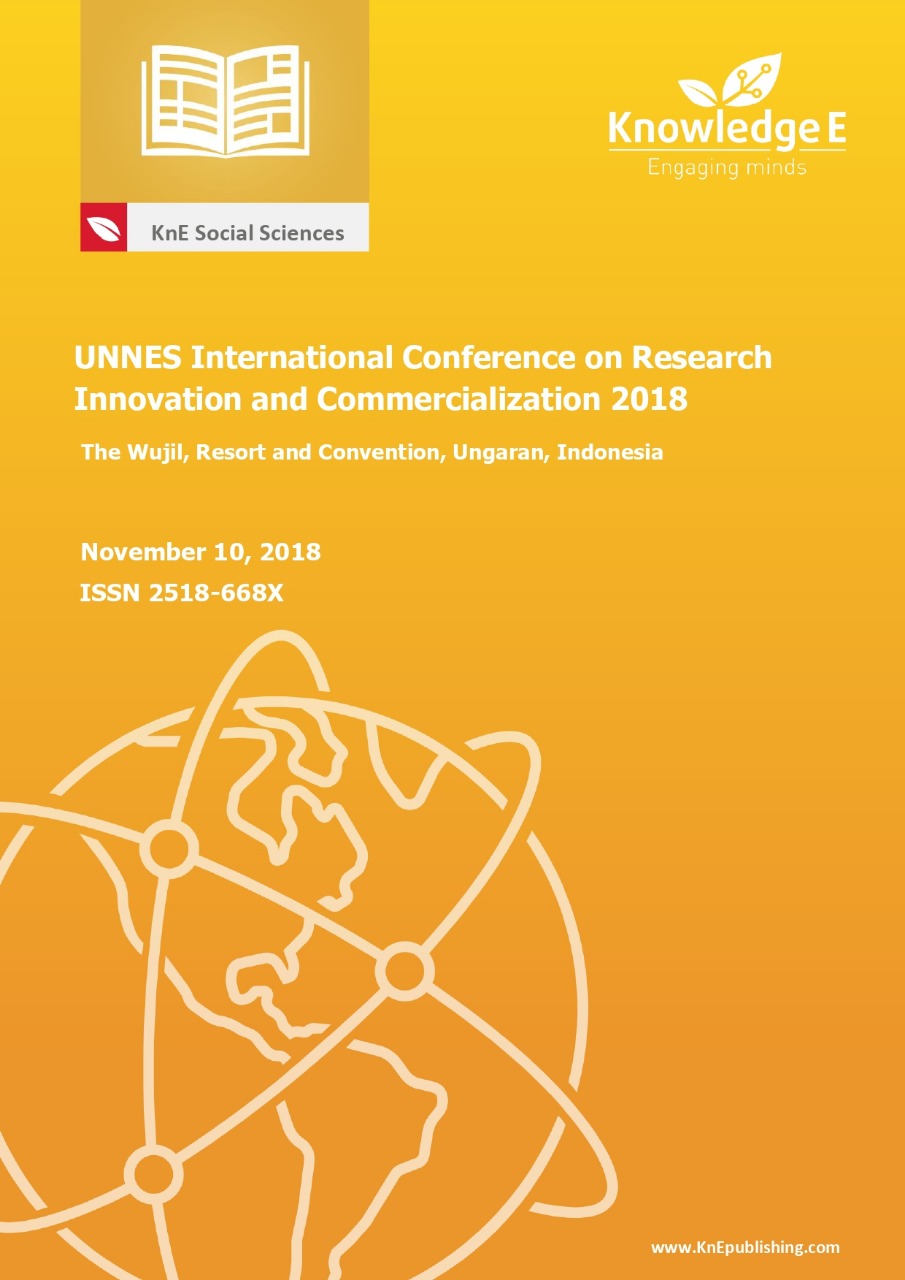Research on Academic Information System Unnes Using Technology Acceptance Model (TAM)
DOI:
https://doi.org/10.18502/kss.v3i18.4694Abstract
Online assessment has been carried out research on academic information system Unnes using Technology Acceptance Model (TAM) whose goal is to achieve accountability in academic application by taking the Graduate Program Unnes sampling. The method used to carry out this research through interviews/in dept interviews, documentation and questionnaires. Analyses were performed using analysis of Structural Equation Modeling (SEM) based covariance AMOS (Analysis of Moment Structures). The results obtained overall, Knowledge of Search Domain has no effect on Perceived Ease of Use. However, CMIN / DF qualified, because it has a value of≤2.
Keywords: Academic Information System, TAM, SEM
References
Agustiani, N.H.,(2010).Pengaruh Pemanfaatan Sistem Informasi Akademik Terpadu (Sikadu) Terhadap Kinerja Individual Dengan Kemudahan Penggunaan Sebagai Variabel Moderating (Tesis). Universitas Diponegoro
Ajzen, I.; Fishbein, M (1980), Understanding attitudes and predicting social behavior, Englewood Cliffs, NJ: Prentice-Hall
Darsono, L. I. (2005). Examining Information Technology Acceptance. Gadjah Mada International Journal of Business, 7(2), 155-178.
Davis, F. D. (1989), ”Perceived usefulness, perceived ease of use, and user acceptance of information technology”, MIS Quarterly, 13(3): 319–340
Hardyanto. 2012. ICT and Institutional Learning: Unnes’ experience Prosiding Seminar NasionalSeminar Nasional Cakrawala Pembelajaran Berkualitas di Indonesia.
Harrison, A. W., & Rainer, R. K. (1992). The influence of individual di€erences on skill in end-user computing. Journal of Management Information Systems, 9, 93±113.
Ajzen, I., & Fishbein, M. (1980). Understanding attitudes and predicting social behaviour. Englewood Cliffs, New Jersey: Prentice-Hall. Retrieved from citeulikearticle id:235626
Darsono, L. I. (2005). Examining Information Technology Acceptance by Individual Professionals. Gadjah Mada International Journal of Business, (Vol 7, No 2 (2005): May-August). Retrieved from http://gamaijb.mmugm.ac.id/e-journal/index. php/gamaijb/article/view/162
Davis, F. D., Bagozzi, R., & Warshaw, P. (1989). User Acceptance Of Computer Technology: A Comparison Of Two Theoretical Models. Management Science, 35(8), 982–1003., 35(8), 982–1003.
Davis, F. (1989). Perceived Usefulness, Perceived East of Use, and User Acceptance of Information Technology. MIS Quarterly, 13(3), 319–340. http://doi.org/10.1016/S0305- 0483(98)00028-0
Davis, F. D., Bagozzi, R. P., & Warshaw, P. R. (1992). Extrinsic and intrinsic motivation to use computers in the workplace. Journal of Applied Social Psychology, 22(14), 1111–1132. http://doi.org/10.1111/j.1559-1816.1992.tb00945.x
Fred D. Davis, J. (1986). a Technology Acceptance Model for Empirically Testing New End-User Information Systems: Theory and Results. Doctoral Dissertation, Sloan School of Management, MIT, ( January 1985).
Hong, S. J., Thong, J. Y. L., Moon, J. Y., & Tam, K. Y. (2008). Understanding the behavior of mobile data services consumers. Information Systems Frontiers, 10(4), 431–445. http://doi.org/10.1007/s10796-008-9096-1
Szajna, B. (1996). Empirical Evaluation of the Revised Technology Acceptance Model. Management, 42(1), 85–92. http://doi.org/10.1287/mnsc.42.1.85
Hong, S.-J., Thong, J.Y.L., Moon, J.-Y., and Tam, K.-Y. ”Understanding the behavior of mobile data services consumers,” Information Systems Frontiers (10:4) 2008, pp 431-445.
Hsu, M.-H., and Chiu, C.-M. ”Predicting electronic service continuance with a decomposed theory of planned behaviour,” Behaviour & Information Technology (23:5) 2004, pp 359 - 373.
Lukito.2009. Pemanfaatan TI di Perguruan Tinggi. http://lukito.staff.ugm.ac.id/files/ 2013/02/Pemanfaatan-TI-di-Perguruan-Tinggi-Final.pdf [9 November 2013]
Palupiningdyah dan Widiyanto (2011). Strategi peningkatan kualitas pembelajaran Melalui pemanfaatan increasing learning Motivation (ILMO). Dalam Jurnal “Ekplanasi Volume 6 Nomor 2 Edisi September 2011 (Online); Tersedia: http://www.kopertis6. or.id/journal/index.php/eks/article//

